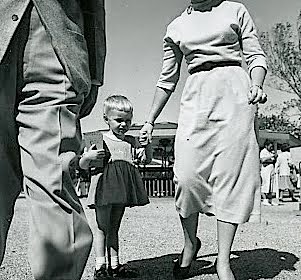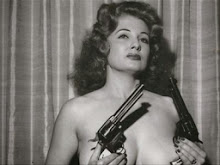
Anal Character: one fixed at the anal level of psychosexual development. People stuck at this early stage are regarded as obstinate, hoarding, and perfectionistic.
Anxiety: Freud discusses three types of anxiety: reality (rational/practical fears about the external world), normal or moral (anxiety about the superego's punishing parental and social shoulds and oughts), and neurotic (irrational fear and worry caused by repressed wishes and experiences).
Cathartic Method: the name Freud and Joseph Breuer gave to their method of allowing patients to get relief by talking out their previously repressed emotions. Freud quickly realized that this relief was only temporary and did not produce lasting personality changes.
Castration: Freud’s concept centers on the fantasies of children regarding the riddle of anatomical difference. For children, the difference between boy and girl implies either the presence or lack of a penis. Thus for boys, girls are seen as inferior because they lack something. The castration complex also refers to the Oedipal narrative, where the (male) child both fears castration from the father and identifies with him (so as not to be a “castrated body” like his mother).
Compulsion Neurosis: a disorder whose symptoms are either prohibitions, atonements or symbolic substitute gratifications.
Condensation: the dream's tendency to combine several themes into one dream symbol. In this way the symbol can stand for several different thoughts, feelings, wishes, ideas.
Conscious: the actual contents of awareness; i.e., what one is conscious of at a given moment.
Death Drive: the drive towards death, destruction and non-existence. In Beyond the Pleasure Principle, Freud defines it as "an urge inherent in all organic life to restore an earlier state of things". The death drive (Thanatos) opposes Eros, the tendency towards cohesion and unity. (Some English translations of Freud’s work have confused two terms that are different in German, instinkt (instinct) and trieb (drive), often translating both as instinct. For Freud, a drive is a force that is not essential to the life of an organism (unlike an instinct) and tends to denature it or make it behave in ways that are sometimes counter-intuitive).
Defense Mechanism: a maneuver employed by the ego to protect itself against anxiety raised by intolerable impulses.
Denial: a defense mechanism in which what is true is intellectually denied.
Displacement: the dream's transfer of emotions, desires and anxieties from one object to another, often the displacement of something more serious onto less important or jarring symbols and material. Displacement can also refers to the tendency of libido to invest itself in objects other than the original object of its aim.
Dreamwork: the mental activity that translates the latent unconscious material into the manifest imagery that disguises it.
Ego (das Ich, literally, the “I”): a rational, organized agency distilled gradually out of the drives of the id as it encounters reality.
Electra Complex: the feminine equivalent of the male Oedipal Complex. While the Oedipal Complex demands a clear shift of a male child’s identification away from the mother and onto the father, the fate of the female child is more complex as she must simultaneously identify with the mother (in terms of her bodily “lack” and the cultural role mapped onto it) as well as the father (in terms of the “power” associated with his cultural role as possessor of a penis). It is this identificatory conflict that Freud conceptualized as “penis envy:” the desire of the female for the power, privilege and opportunities granted to men in a patriarchal society. In both conceptualizing and naming this complex, Freud drew on the myth of Electra as expressed in the Greek tragedies of Sophocles and Euripedes.
Erogenous Zones: those areas of the body most liable to sexual stimulation--namely, the mouth, anus, and penis, although Freud regarded the entire body as an erogenous zone.
Eros: one of the two basic sources of all the drives. Eros, whose name comes from the Greek god of love, is the principle of life; it binds together and is most clearly seen in love. Its drives tend to be more plastic and displaceable than those of its opponent, Thanatos, the death drive. Freud saw psychic life as an interplay of these two ever-interpenetrating forces, Life and Death.
Family Romance: Freud used this term to talk about the conflicts between parents and children as the child necessarily grows up and grows away from his family. The “family romance” is a conscious fantasy, later repressed, in which a child imagines that their birth parents are not actual but adoptive parents. Typically, the fantasy parents are of noble lineage, or at least of a higher social class than the real parents.
Freud theorized that a denigration of ones parents replaces an early overestimation of them and that such feelings and desires are not only part of a “healthy” transition to adulthood, but are actually less about “hating” ones parents than “an expression of the child’s longing for the happy, vanished days when his father seemed to him the noblest and strongest of men and mother the dearest and loveliest of women. He is turning away from the father whom he knows to-day to the father in whom he believed in the earlier years of his childhood; and his phantasy is no more than the expression of a regret that those happy days have gone...” The fantasy also addresses the child’s question, “who am I?” and expresses an attempt to place oneself in a broader social history. Thus, the “family romance,” touches on issues of social relations and relations between extra-familial generations as well issues of aging and the passage of time.
Fetishism: the displacement of desire from the original object (say, a woman) to a part of her body (say, a foot) or other associated object (women’s shoes, for example). The term arose from the general concept of fetishism: an object thought to have supernatural powers, or an object created by humans that has power over other humans.
Fixation: when something libidinal is arrested in its development even though the rest of the personality keeps on growing up.
Freudian Slip: a mistake, usually of speech, made due to the collision of conscious and unconscious conflicts.
Id (das Es, literally, the “It”): the permanently unconscious motivational wellspring of the mind. From the id originate all the drives that impel psychic life.
Freud borrowed this term from Georg Groddeck's (1923) The Book of the It. Groddeck wrote: “I hold the view that man is animated by the Unknown, that there is within him an “It,” some wondrous force which directs both what he himself does, and what happens to him. The affirmation “I live” is only conditionally correct, it expresses only a small and superficial part of the fundamental principles.”
The notion that we experience as other, rather than as self, our own deepest drives and motives -- and their linkage to memory images, to the flow of speech and action, and to the general tone of our personality -- is one of the most provocative and radical elements of the Freudian “split subject.”
Identification: an attachment to an object which results in incorporating some of its aspects into oneself.
Latent Content: the true thoughts below the manifest imagery of the dream. Psychoanalysis seeks to translate the “disguised” manifest content into the true latent, and therefore repressed, wishes of the dreamer.
Libido: the name Freud gives to basic, somewhat biologic, drives. While sometimes the term is used to refer to all instinctual urges, the term libidinal usually refers to sexual instincts.
Manifest Content: what we usually think of as the dream itself, and what Freudians see as surface, a disguise of the true latent dream material.
Masochism: masochism and sadism describe feelings of sexual pleasure or gratification derived from inflicting suffering or having it inflicted. Freud made masochism and -- to a lesser degree -- sadism core parts of psychoanalysis. In Three Essays on the Theory of Sexuality he called the tendency to inflict and receive pain during sex “the most common and important of all perversions.” Freud developed and changed his theories of sadism and masochism repeatedly sometimes conceptualizing them as gendered “disorders” (women as masochistic, men, sadistic) and sometimes using the terms to discuss more broad tendencies in human sexuality and behavior in general.
Narcissism: the investment of libido into oneself. The libidinal equivalent of egotism. In “On Narcissism” Freud wrote that normal development means transferring more and more attention and interest onto other people and thereby decreasing one's original or primary state of narcissism. Primary narcissism is the self-involvement all infants start out with; secondary narcissism is a turning of libido away from objects back to the ego, as with what we now call the narcissistic personality.
Neurosis: a conflict between ego and id that produces symptoms of psychological discomfort. Neuroses are the result of the constant, painful, and sometimes unsuccessful efforts of the ego to block the intrusion of libidinal desires repressed in the unconscious. Analysis seeks to uncover and to relieve the hidden causes of this internal conflict (However, for Freud, and later psychoanalytic theorists like Lacan, a complete and total cure can never be effected since to some degree neurosis is a necessary component of the societies we live in which require for their cohesion a renunciation of libidinal drives).
Oedipal Complex: Freud’s well known concept was inspired by the Greek legend of Oedipus Rex, especially as it is expressed in Sophocles's play, a man who unknowingly marries his mother and kills his father. The Oedipus complex is way of talking about both the erotic and destructive components of the child’s (especially the male child’s) relation with its parents.
The standard narrative is that the (male) child desires his mother, the father interferes and prevents this union, the son detects his own sexual difference from his mother (her lack of a phallus), and adjusts to this reality by identifying with the father whose power also threatens to castrate him.
Phobias: in Freudian theory, phobias are a defense against anxiety produced by repressed impulses. Anxiety is moved to an object or situation and then becomes the phobic stimulus. In order to not deal with the repressed conflict, the person tries to avoid the object or situation.
Pleasure Principle: the drive to seek pleasure and to avoid pain. Its counterpart is the reality principle which defers gratification when necessary. The id follows the pleasure principle which rules early life, but as one matures, one begins to learn the need to sometimes endure pain and defer gratification because of the obstacles of reality.
Polymorphous Perversity: the young child's tendency to get sexual gratification from anything, regardless of its gender or nature. As a result of psychosexual development, this tendency is usually replaced by “normal” heterosexuality.
Preconscious: the entire set of contents of the mind accessible to consciousness but not in awareness at the moment; i.e., what is descriptively unconscious but not blocked from access by repression or other psychological defenses.
Primal Scene: the child’s viewing of parental lovemaking. For Freud this could be literal or imagined, what is important is that the child's experience or (mis)understanding of his parents as sexual beings usually triggers an apprehension of them as having a life totally separate from the child.
Projection: a defense mechanism in which one attributes one’s own unacceptable or unwanted thoughts or/and emotions to others. Projection reduces anxiety by allowing the expression of the unwanted unconscious impulses/desires without letting the conscious mind recognize them.
Psychodynamic: the perspective that personality is constituted by interacting and sometimes conflicting psychological forces.
Reality Principle: the ego's sense of realistic and rational adaptive expectations. This principle evolves from and governs the heedless hedonism of the pleasure principle.
Regression: a return, temporary or chronic, to an earlier level of psychological development.
Repetition Compulsion: the psychological phenomenon in which a person repeats a traumatic event or its circumstances over and over again. This includes reenacting the event or putting oneself in situations that have a high probability of the event occurring again. This "re-living" can also take the form of dreams, symbolic actions, repeating the story of what happened, and even hallucination.
Freud developed this idea in Beyond the Pleasure Principle where he meditated on several examples of people repeating or revisiting traumatic experiences and memories in an unconscious effort to gain mastery and control over them. One of his observations is of a child who has created a game for himself: he throws a spool with a string attached to it over the side of his bed so it is out of view, saying “fort!” (go) He then reels the spool back, exclaiming “da!” (there [it is]) when it reappears. To Freud, the child’s fort/da game has creatively given him a way to deal with the idea of loss. His mother may not always come when he calls, but the child can now defuse his frustration and exert control over his outer world through his repetitive ritual of dis- and re-appearance.
In this essay, Freud also discusses the way in which soldiers traumatized by violence in the First World War and other accident victims keep revisiting in hallucinations, dreams and other compulsive behavior, the very experiences which give them pain. Freud theorizes that the “repetition compulsion” is the outcome of the ego’s need to retain coherence and mastery in the face of deep and real threat.
Repression: a mechanism of psychological defense, which conceals certain drives deep within the unconscious mind. The ego's ridding itself of unacceptable desires and ideas by dumping them into unconsciousness.
Resistance: the patient's effort to remain unconscious of what is repressed. Common forms of resistance include arguing with the therapist, “forgetting” to show up for a session and deploying other defense mechanisms in order to remain unaware of unconscious material.
Scopophilia: the term for pleasure in looking, in both the sense of seeing and being seen. Freud distinguished between two forms of this drive: one active, “voyeurism,” and the other passive, “exhibitionism,” which are often taken to be gendered (men make women into objects of their gaze, women learn to perform as such).
Screen Memories: memory fragments that cover a child's earliest and forgotten experiences and fantasies.
Self-Analysis: Freud conducted a long analysis of himself during the time he formulated the first psychoanalytic concepts. He believed much could be learned by analyzing oneself, however being analyzed by someone else was absolutely necessary due to the many resistances and blind spots that occur in the course of self-observation.
Sublimation: when the energy of unconscious (sexual/death) drives are channeled into socially acceptable activities. Civilization, Freud argues, is premised on this process. His favorite examples of sublimation are art and religion.
Superego: (das überich: the “over-I”) the largely unconscious part of the personality responsible for moral self-control -- roughly, the “conscience.”
Symptom: the visible sign of an invisible (because repressed or unconscious) anxiety. Symptom and cause never share a simple or obvious one-to-one relation, in fact symptoms usually have multiple causes.
Transference: in the process of analysis, a specific type of projection in which extra-analytical conflicts and relationships are re-experienced with the therapist, whose job is to interpret them back to the patient. Transference can also refer to any distortion of a present relationship because of unresolved (and mostly unconscious) issues left over from early relationships, especially with the parents in childhood. All distortion of the interaction between doctor and patient (or boss and worker, teacher and student, or any hierarchical relationship) by the needs and behaviors that were most meaningful in childhood are forms of transference.
The Uncanny: (das Unheimliche, literally, “un-home-ly”) an instance where something can be familiar yet foreign at the same time, resulting in a feeling of the uncomfortably strange. Because the uncanny is familiar, yet strange, it often creates cognitive dissonance within the experiencing subject due to the paradoxical nature of being both attracted to and repulsed by an object at the same time. Freud’s discussion of the concept centers on examples of doubling, repetition, seemingly meaningful patterns within coincidence, the experience of deja-vu, and the sometimes ambiguous boundary between life and death, especially in relation to artificial animation.
Unconscious: mental processes not accessible to consciousness by direct means, i.e., by turning our own attention to them. Their existence must thus be inferred through examination of their symptoms: the gaps and traces they in consciousness, dreams, and other activities.


























































No comments:
Post a Comment